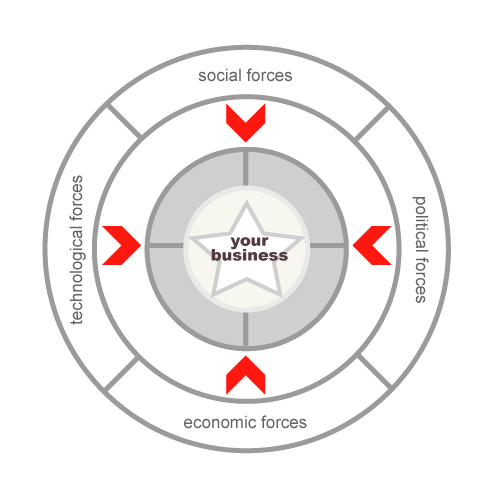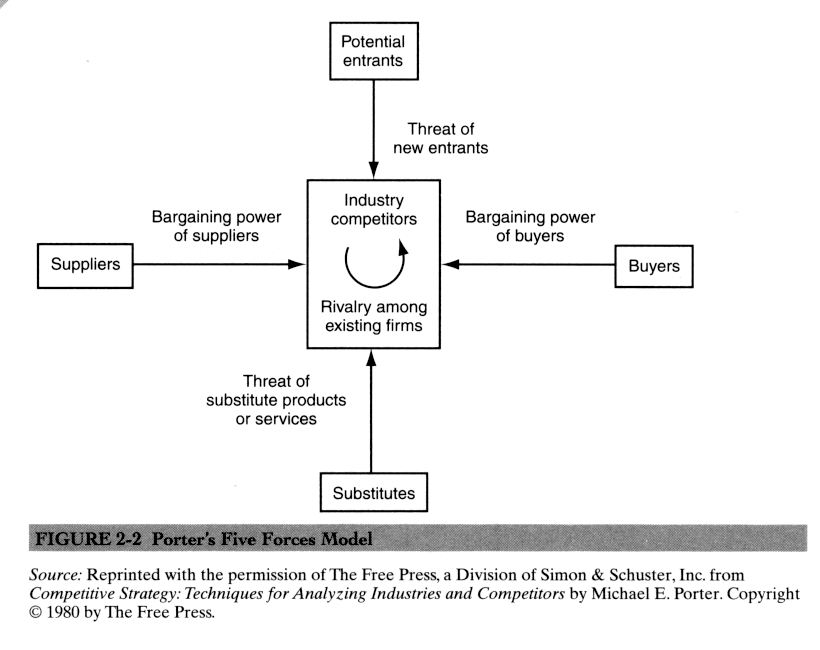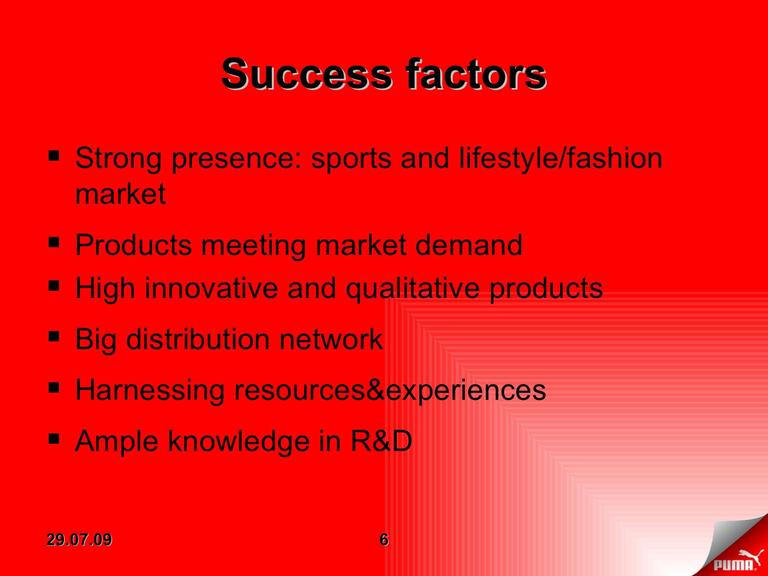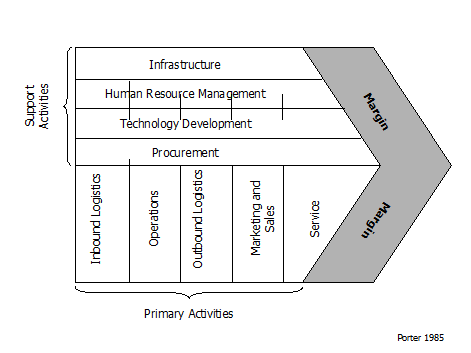Introduction: Puma’s Organizational Structure
Puma SE is a German multinational company that operates within the global sports industry. The company key regions of operation are Europe, North and Latin America, and Asia. Since the year 2005, the company has indicated its interest in Africa in terms of sourcing raw materials, as well as marketing. In 2004, Puma SE enjoyed a share of 1percent of the global sports equipment market behind Nike, Reebok, and Adidas and also had 5 percent market share of brands where it was ranked the fifth (Anonymous, 2004, p.10).
Puma was established by Rudolf Dassler in 1948 after he and Rudi Dassler split the family shoe business. In the late 50s, the company became a limited partnership and went public in 1980 (Palepu et al., 2007, p.318). The company deals primarily with athletic footwear, apparel, and accessories. The corporation transformed into a market-oriented firm that is concerned with diversifying the brand into superfluity of lifestyle and fashion options (Miller, 2010, p.2). The company focus drifted a far its conventional centralized structure to becoming a virtual sports company. The decentralized structure is reflected by the way Puma operates from three headquarters in Germany, the United States, and Hong Kong. Around 90 percent of the footwear is produced in Asian countries, as well as 60 percent of the apparel (Anonymous, 2004, p.117).
This paper is intended to assess Puma’s operative and market environments in order to discover its competitive advantages and opportunities in place. There will also be a determination of the competences, resources, weaknesses, threats, and strengths the company can use to exploit these opportunities.
Market environment analysis
As stated by Adam MacLeod, a sports business analyst, the European and American markets for sports equipment have a somewhat mature lifecycle (MacLeod, n.d., p.3). This has resulted from the interest and dominance of the key market players within these markets. Therefore, this section seeks to analyze the global environments in terms of macro and microenvironments. The tools projected for this part are PESTLE and Porter’s Five Forces analysis.
PESTLE Analysis
Political, economic, socio-cultural, and technological factors are considered to be centered on any business environment, as illustrated below.

Political Analysis
For Puma, SE went through a massive restructuring to operate in the wider global market. This process of restructuring exposed the company to different political factors across various economies. Governments’ stability is a key factor that affects the company. For example, wars in Afghanistan and terrorist attacks, geopolitical uncertainty led the company to move its production from Pakistan (Anonymous, 2004, p.116). At the same time, the political stability in China made the company increase its factories in the country, leading to a sales increase of 34.6% (Anonymous, 2004, p.117).
Economic Analysis
Principally, the position of the German economy with respect to monetary concerns, as well as stock exchanges, is a fundamental element that motivates the Pumas trade. The economic drifts within the domestic realm and that of the affiliating states tend to have a substantial bearing on the corporation. For instance, the rapid growth in China and India’s economy is suspected by the company to be the major contributor to the increase in revenues. The fact that the company is determined to open 25 stores in India reflects this suspicion.
Social environs
Consistent with Canada Newswire (2011), life drifts have been posing an immense variation in the global sports industry. In fact, the industry partakes have been incessantly progressing with respect to private tastes, technologies, as well as prevalent games. Several diverse sports seem to be attaining reputation in the core areas where Puma SE Corp operates in. The approval of sports, namely skateboarding, alongside diving, ought to be assumed as an imperative facet in planning, developing, and administration of Puma SE. The increasing number of women in sports should be taken into consideration. For instance, the number of female students in American high schools who participate in sports has risen by 33% (Canada Newswire, 2011).
Technological setting
Apropos the technological dynamics, Puma concentrates more on the research and developmental undertakings and similarly on the applications of mechanization, particularly those allied to the information technology. Indeed, online sales through the company’s website contributed 470.1 million Euros in 2010 (Puma, 2010, p.103). Additionally, the maturity of the technological know-how might distress the progress because of the agitated nature of expertise. With its global operations, it is important for Puma to consider global communication in order to facilitate the operations efficiently.
Legal environment
Foreign trade regulations, including treaties and trade agreements, which must be obeyed by companies and member countries, are the key legal factors that affect Puma. Countries like China and India have entered into many agreements with Western nations, which must be considered by the company. Taxation policies also have a big impact on Puma’s business since they add expenses that reduce revenue though they can also be barriers to entry to the potential markets. Differed taxes in 2010 added up to 50.7 million Euros, which constituted an increase of 2.1% when compared to the financial year 2009 (Puma, 2010, p.110).
Environment analysis
Puma SE is affected by environmental regulations and standards, just like any other manufacturing firm. The organization has been taking measures regarding the environment after some factories were accused of destroying the environment. This led to the establishment of the Social Accountability and Environmental Standards team to oversee the implementation of the code of conduct as pertaining to environments (Anonymous, 2004, p.114). The company’s effort to ensure sustainable development in terms of environment sensitivity has enabled the company to expand its outsourcing activities significantly.
Porters Five Forces
Michael Porter a famous market analyst proposed an internal environment analysis depicted below.

Rivalry
The degree of rivalry in the global sports equipment industry is relatively high. There are very many firms, including branded companies like Nike, Reebok, Adidas, Asics and Fila which operate within the industry. There are also other emerging firms such as Li Ning, Anta and Mizuno which have shown substantial performance within the competitive market (Business Wire, 2011, p.5). In such a competitive environment, Puma is required to improve its competitive advantage in order to stimulate growth.
Threat of new entrant
The growth of sports equipment industry and new manufacturers in growing economies are increasing the threat of new entrants. This increment is in the short run intensifying competition in an already mature industry (Varga, 2010, p.5). However, Puma is a recognized brand with high reputation in the markets the new entrants are targeting. With many of them targeting the Asian region, the company has already shifted much of its operations to the region.
Threat of substitute
The sports equipment market is fragmented with many big retail chains offering apparel and footwear products across the world. These businesses are a source of important threat to Puma SE in terms of alternative products. Luckily, the company has its own distribution network which comprises of many branded concept stores, factory outlets, and online stores. The functionality of the distribution network was reflected in the year 2010 where retail operations increased by 2.6% (Puma, 2010, p.103).
Bargaining power of buyers
The sports equipment market is characterized by stiff competition which offers buyers high bargaining power. Despite the existence of local manufacturers, Puma has to compete with branded companies such as Nike and Reebok in almost all markets. Many consumers are aware of this competition and take this advantage to leverage prices. As Sheehan et al (2002) observe, Puma and other branded companies have been forced to reduce average prices by the cheap products offered by manufacturers in medium-end section (p.25-43).
Bargaining power of suppliers
The production of sports apparel, footwear and accessories requires a range of raw materials that originate from different areas. Like many other sports equipment firms, Puma must rely on the suppliers for these low materials. As a result, the bargaining power of the suppliers is quite high in this industry. Puma has a very wide supplier base across many parts of the world including Africa where it sources cotton for apparel production (Puma, 2010).
Market structure
Puma is among the branded companies who have developed competitive advantage in the global sports equipment market. This is an oligopoly market with relatively few major players controlling the market including Nike, Adidas, Reebok, Puma, Fila, Lotto, Kappa, Umbro, New balance and Asics. Puma is a leader in European markets while the Asian operations are of a great significance. As stated by the former Chief Executive Officer Jochen Zeitz, Pumas’ organic growth strategy ensures the positioning towards full brand potential (Puma, 2010, p.6). This is a commitment to sustaining its performance despite the concentration of firms in the international market.
Strategic grouping
The global sports equipment in industry consists of many strategic groupings including those companies that deal with general leisure products, recreations products, specialty brands and private labels. Primarily, Puma deals with branded sports products though there is a general categorization of the general recreations and leisure products. The company has achieved this through strategic alliances with other recognized companies in target markets. In 2010, the company transformed from PUMA AG to PUMA SE by co-branding the new sports and lifestyle division and PPR a French luxury group (Puma, 2010, p.6). Moreover, Puma acquired some important firms such as Equipment brand Cobra Golf and Wilderness Holdings Limited in order to reinforce its commitment to sports performance (Puma SE, 2011, p.1).
Market segmentation
The global sports equipment market is segmented according to the benefit sort by the consumers. Nevertheless, Puma focuses on three segments of brands; Puma brand, Cobra Golf brand and Tretorn brand (Bloomberg Business Week, 2011, p.1). Puma brand involves sports performance lifestyle such as footwear, apparel, fragrances and bikes plus accessories including timepieces and eyewear for different categories such as motorsports, football, running, body train and sailing. Cobra Golf brand involves golf equipment while Tretorn brand includes leisure shores, tennis balls and rubber boots. Furthermore, Puma provides sport fashion products in collaboration with designer labels.
Strategic analysis
Strategic analysis of Puma is centered on several success factors provided by Miller, the famous marketing analyst of the 21st century.

Resources
Puma SE has several important threshold and distinctive resources that could ensure a sustainable competitive advantage as discussed below.
Threshold resources
Adrian Haberberg and Alison Rieple who are famous gurus in strategic management explain threshold resources as those resources that are not strategic yet are still important because they help a business to meet the criteria for survival in an industry (Haberberg & Rieple, 2008, p.285). Puma has several manufacturing plants, brand concept stores and retail outlets that have enabled the company to satisfy the customer needs and reach many at the ground level. The company has also adopted new technologies for its product development and management which have improved the speed and quality of production. Besides, Puma promotes and develops employees’ potential by assigning high level of personal responsibility, as well as providing suitable training measures (Puma, 2010, p.119).
Distinctive resources
According to Haberberg and Rieple, distinctive resources are strategic resources that are scarce to acquire and provide the company with a sustainable competitive advantage (p.285). Puma’s distinctive resource lies with its innovative capability by the R&D team. The company is committed to ensure a team that is always armed with the innovative skills. For instance, the company offers vocational training in collaboration with the Cooperative State University in an effort to identify the potential employees who can facilitate company’s growth. The company has a global talent management system (People Puma) through which the performance and competency of employees is assessed in order to identify the most talented, and train them according to their talents (Puma, 2010, p.119).
Core competency
The core competencies of a company refer to the capabilities that form the source of competitive advantage (Hitt et al, 2011, p.82). Puma’s strong brand name is one of the sources of competitive advantages. Throughout, the company has developed strong brands that have hit most of the markets. Jochen Zeitz, former CEO confirmed that Puma’s strategy is committed to building a portfolio of strong, complementary brands in its sports and lifestyle arena (Puma, 2010, p.6). Among the renowned brands is the spiked shoes for running that have gained substantial respect from athletes. The key success factors of Puma include strong presence in the market which stems from strong brand and recognitions.
Another core competency in Puma is a sponsorship strategy for individuals and sports events across the world (Amis et al, 1999). The fact that the company sponsors Usain Bolt, the renowned Jamaican sprinter, has increased its market share in the Latin America (Miller, 2010, p.2). This runner has been one of the most effectual tools in advertising the company within the developing markets. This corporation has won recognition among the elite and older individuals through its Cobra Golf division that sponsors golf events across Europe. There is no doubt that the quarterly growth of 2.7% in the first quarter of 2011 is a result of the new segments the company is realizing through the sponsoring activities (Puma, 2011, p.4).
Value chain analysis
In 1998, Michael Porter, a recognized expert, due to his contribution to marketing, emphasized his opinion about a firm’s value chain to comprise of the primary and supportive activities (p.36).

In accordance with Porter’s organization, Puma SE delivers value to their customers through its value chain that comprise a number of primary and supportive activities.
Primary activities
For inbound logistics, Puma ensures availability and delivery of raw materials by monitoring the suppliers’ activities across the world. Indeed, the company has taken a step further to support the people who provide with raw materials such as cotton farmers in Africa. Approximately, 90% of the factories are directly connected with the suppliers as of 2004 (Anonymous, 2004). The company is also securing the delivery of enough labor for the factories by collaborating with learning institutions to develop students for specific jobs in the company.
For the operations, Puma has maintained a strong focus on research and development which ensures quality products and early entrance in potential markets. For example, the company spent 63.6 million Euros on product design development in 2010 compared to 58.1 million Euros spent in 2009 (Puma, 2010, p.3). These activities are accompanied by the adoption of new information technology applications that facilitate operations.
For outbound logistics, Puma has a comprehensive distribution channel that ensures that the customers throughout the 80 countries it operates get products at the right time. This channel includes privately managed and outsourced supply chains. The chains get the products to the customer through the company’s branded stores and the retail outlets managed by the company.
Secondary activities
For supportive activities, Puma’s value chain includes business and resources management that is supported by information technology activities. These include BI applications, SSP information management and financial applications that manage overseas operations. Human resource activities include managing more than 9,313 employees, environmental groups, acquisitions risks, and labor councils. Product development activities involve the development of diversified portfolio, lifestyle labels, and customized products.
VRIN framework analysis
Puma SE derives value through its decentralized structure that ensures distributed control over the key areas of operation. The Hong Kong headquarters are responsible for the Asian operations and primarily deal with production. The Germany headquarters has the obligation for European market and is mostly concerned with global administration. The US headquarter has the responsibility of marketing activities of the company.
Puma rare capabilities are associated with a portfolio of strong, complementary brands and involvement in sustainability. The brand is respected not only by the customers across the world, but by some of the most prominent sports men in the world. Conversely, Puma is recognized as the leader in environment sustainability (Puma, 2010, p.10). This has elevated the company’s position in the face of many regulatory bodies, which sometimes become a barrier to expansion.
Inimitable capabilities for Puma are centered on the leadership, team working, and deployment of resources. The company has a strong management team that is steered by a strategy-oriented CEO, Franz Koch. Employees are developed to work in teams that allows for knowledge sharing similar to the Japanese kanban system (Guneri et al, 2009).
Puma’s decentralized governance is evidently non-substitutable considering the cost and time of restructuring. This form of governance offers the company the advantage of controlling overseas operations more efficiently. The system also allows for better research of potential markets in the growing economies.
Strategic fit analysis
The analysis conducted suggests that Puma has a number of opportunities that arise in the growing economies as well as challenges posed by the stiff completion. The company must face legal limitations and saturation in some markets in the presence of perceived new entrants. There are other threats from substitute products while the suppliers and buyers have substantial borrowing power. Fortunately, the company is well established with recognition across many markets. There is also the advantage created by its strategic grouping that ensures a better segmentation and differentiation of the market.
Puma has an array of threshold resources that ultimately ensures its survival in the industry. The many production facilities, sales outlets, and innovation capabilities position the company strategically in the market. The core competency of sponsorship is important as it plays the dual-role of marketing and corporate social responsibility. However, VRIN analysis leads to the assumption that Puma should improve their primary activities and develop demand projections as well as forecasts resulting from lesser storage, and therefore tied-up capital. The company also needs to look at sales and marketing channels as to where sales are highest as the company lacks clear definition of these activities.
Puma: SWOT Analysis
Strengths
Puma has a strong brand equity that enhances position within the market place. Through innovation and marketing, the company’s sports footwear and apparel exhibit very strong brand equity. This brand equity allows the company to secure a relatively large share of the footwear market: about 3% as of 2010 (Puma, 2010, p.90). Puma constant focus on new technology to improve their products has made them to be among the market leaders. The recent partnership with French Group PPR has spawned a new era in technology for the industry. Puma produces its sport products at low cost and distributes them over a broad network. The low-cost production revolves around suppliers in Asian and Latin America countries.
Weaknesses
Puma product portfolio is not exhaustively diversified and it misses some sport segments such as motorsports. This weakness has been linked to the recent decline in revenues, especially during the 2007 to 2009 recession. During this period, the company’s growth rate slowed by 2.7% showing underperformance which probably led to a competitive disadvantage (Puma, 2011, p.10). When compared to the industry leaders, Puma’s distribution system lacks efficiency. With most of the manufacturing operation taking place in Asia and Latin America while the marketing is in North America and Europe, the company is a bit slow in meeting the demand. Puma has lower financial resources when compared to the industry leaders, which limits the capabilities that lead to the company’s competitive power.
Opportunities
Puma’s new product launches is a big opportunity. The company’s innovation thinking within sports equipment industry has enabled them to release new products every year. Once again, Puma’s partnership with PPR has only enhanced their potential to release new products. Acquisitions, such as those of Equipment Brand Cobra Golf, are enabling the company to acquire the sports segments that it has lacked throughout. More sponsorship is also an opportunity for the company, as the recent sponsorship of Usain Bolt has enabled the company to dominate the Latin America maker with a share of 26% (Larmann, 2011, p.15). Eric Larmann, a business analyst confirms that growth in the footwear market is scheduled to increase from $62.11 billion to $69.48 billion between 2009 and 2014 and can be a big opportunity for footwear firms (Larmann, 2011, p.9).
Threats
High competition is a big threat for Puma. The company is forced to compete with many different manufacturers including, Nike, Adidas, New Balance, k-Swiss, Reebok, and Asics. The new sport segments are also opening the door to new competitors like Mizuno. The increase of the counterfeit products threatens to decline sales from the Puma brands. Spurred by the internet sites, sales in online counterfeit goods increases by 9% in 2009 and by 2010 they amounted to $500 billion in total global annual sales (Larmann, 2011, p.9). Low quality products can damage Puma’s brand image, as customers are receiving products with lower caliber that the real Puma brand.
Recommendations for the Business Model of Puma
Despite Puma SE showing substantial leverage of the market place, the company still lags behind several competitors such as Reebok, Nike and Adidas in terms of the market share. This indicates that the company needs to enhance its competitive advantage in order to increase its market share. The best way to achieve this is to establish a counteractive strategy. This can be done by improving the activities that affect the value given to customers such as sales and services operation. The company can use the key strengths to exploit the opportunities, as well as transforming the weaknesses into strengths. The success factors should be directed to the customer satisfaction especially.
References
Amis, J., Slack, T. & Berrett, T. 1999. Sports sponsorship as distinctive competence. European Journal of marketing, Vol.33 (3/4), pp.250-272.
Anonymous. 2004. Sportswear industry data and company profiles background information for the play fair at the Olympics campaign. Web.
Bloomberg BusinessWeek. 2011. PUMA SE (PUM: Extra). Web.
Business Wire. 2011.Research and markets: China sporting goods industry. Web.
Canada Newswire. 2011. Ferrari and Puma announce long-term partnership. Canada Newswire.
Guneri, A. F., Kuzu, A. & Taskin, G. A. 2009. Flexible kanban to enhance volume flexibility in a JIT environment: a simulation based comparison. International Journal of Production Research, Vol. 47(24), pp.6807-6819.
Haag, S., Baltzan, P. & Phillips, A. 2006. Business driven technology. New York, NY: The McGraw-Hill Companies, Inc.
Haberberg, A. & Rieple, A. 2008. Strategic Management: Theory and Application. Oxford, UK: University Press.
Hitt, M., Ireland, D. & Hoskisson, R. 2011.Strategic management: Competitiveness and globalization Concepts. Mason: South Western Cengage Learning.
Larmann, E. 2011. Nike, Inc. Situation Analysis. Web.
MacLeod, A. n.d. Puma AG Market Buster. Web.
Miller, S. 2010. Marketing analyses Von Puma. New York, NY: GRIN Verlag.
Palepu, K. G., Healy, P. M., Peek, E. & Bernard, V. L. 2007. Business analysis and valuation: text and cases. Florence, KY: Cengage Learning EMEA.
Phatak, A. V., Bhagay, R. S. & Kashlak, R. J. 2009. International management: managing in a diverse and dynamic global environment. New York, NY: McGraw-Hill Company.
Porter, M. E. 1980. Competitive strategy: techniques for analyzing industry and competitors. London: The Free Press.
Porter, M. 1998. Competitive advantage: Creating and sustaining superior performance: With a new introduction. New York: Simon and Schuster.
Puma SE. 2010. Annual report 2010. Web.
Puma SE. 2011. Puma acquires Equipment Brand Cobra Golf. Web.
Puma SE. 2011. Puma SE financial report January-September of 2011. Web.
Sheehan, C., Nelson, L. & Holland, P. 2002. ‘Human resource management and outsourcing: the impact of using consultants’. International Journal of Employment Studies, Vol.10 (1), pp.25-43.
Spence, M., & Kale, S. 2011. ‘Optimizing the internal value chain: Principles and practices’. Journal of Management Organization, Vol.14 (2), pp.193-206.
Varga, M. 2010. Analyzing the Australian fashion industry according to Porter’s five forces. New York: GRIN Verlag.